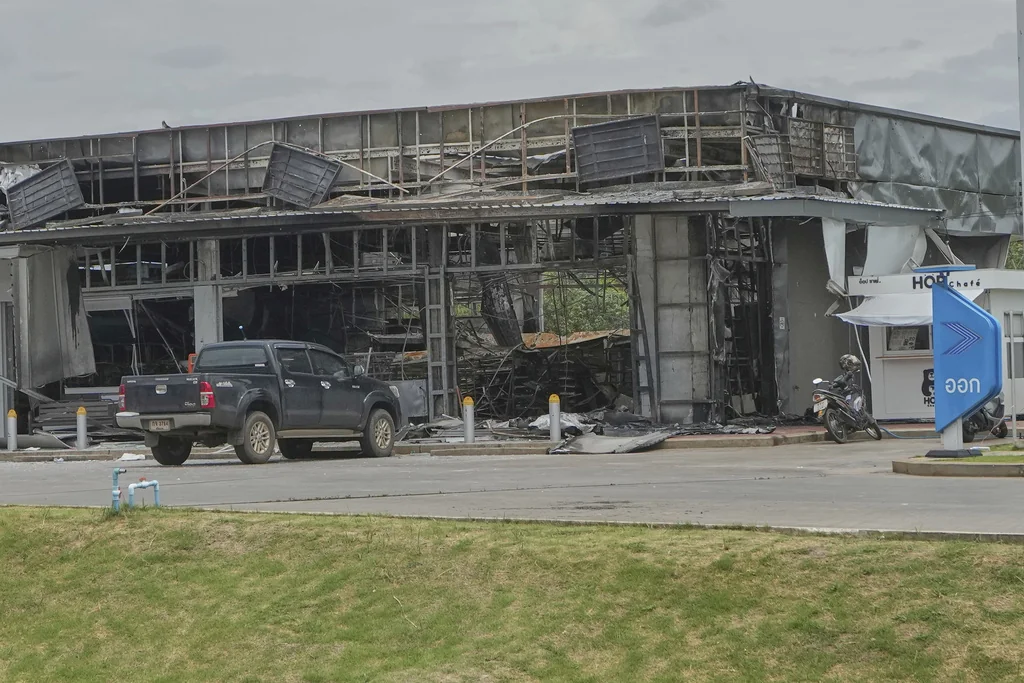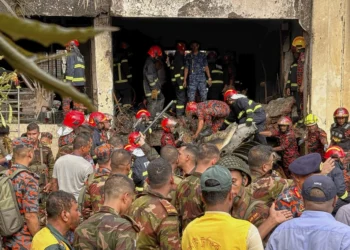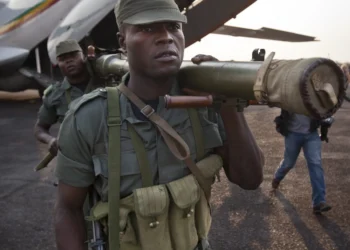Thailand on Friday warned that an escalating border conflict with Cambodia could soon escalate into war between the two countries, as scores of thousands flee the area.
On Thursday, Cambodian and Thai forces began exchanging fire near the ancient, disputed temple of Prasat Ta Muen Thom. Small arms fire quickly escalated into heavy artillery and missile fire, airstrikes, and the deployment of tanks and armored vehicles. Peace efforts have come to nought, as officials on both sides warn that the situation will likely continue to escalate.
“The situation has intensified and could develop into war,” acting Thai Prime Minister Phumtham Wechayachai told reporters on Friday. “For now, it’s just clashes using heavy weaponry.”

Thailand took steps in preparation for war on Friday, declaring martial law in parts of the country. Over 131,000 Thai citizens had been evacuated from areas close to the border, according to Thailand’s Health Ministry.
The United States, a longtime ally of Thailand, is urging an immediate end to the conflict.
In a statement, State Department Spokeswoman Tammy Bruce called for “the immediate cessation of attacks, protection of civilians, and peaceful settlement of disputes.”
The two sides appeared to be on the verge of peace on Thursday. Cambodian Prime Minister Hun Manet claimed that Thailand had agreed to a ceasefire brokered by Malaysian Prime Minister Anwar Ibrahim, but reversed its position an hour later.
“The key to resolving the current armed conflict between Thailand and Cambodia is the genuine willingness of the Thai side to accept a ceasefire, which is the first step toward finding further solutions between the two countries,” Manet said.
The conflict puts China in a unique position, as both belligerents’ foremost trading partner and a major arms supplier. Chinese Foreign Minister Wang Yi expressed neutrality on Friday, calling the conflict “distressing and worrying.” He then sought to blame the West, telling ASEAN’s general secretary during a meeting in Beijing that the “root cause” of the conflict was “the legacy of Western colonizers.”
Cambodia’s apparent escalations have puzzled international observers. Thailand enjoys relative prosperity, while Cambodia is the poorest country in the region, with an almost nonexistent industrial base. Thailand’s advanced air force includes hundreds of aircraft, including F-16 fighter jets, while Cambodia has just under two dozen dated Soviet and Chinese aircraft and no fighter jets.
Thailand is three times bigger than Cambodia in landmass and four times bigger in population. Thailand’s army is nearly five times larger, its Navy nearly six times larger in terms of craft, and its quality is incalculably superior. Thailand’s army is significantly mechanized, with over 400 battle tanks and 1,2000 armored personnel carriers, while Cambodia possesses just 200 decades-old tanks, Reuters reported. Thailand has 6.5 more artillery pieces than Cambodia.
Combat footage posted on social media reflects the poor state of the Royal Cambodian Army, a far cry from the complex tactics illustrated by well-disciplined Russian and Ukrainian troops worldwide. Videos showed half-naked Cambodian soldiers firing blindly in the general direction of Thai positions, while their rocket artillery fired from busy civilian roads and neighborhoods.
Cambodian President Hun Sen suffered a major gaffe when he posted pictures of himself being briefed by military leaders on the conflict on social media, which apparently showed classified military maps showing Cambodian positions. The images were quickly deleted.
The immediate conflict began in February after a group of Cambodian tourists was taken to the Prasat Ta Muen Thom temple, claimed by both countries, where they sang the Cambodian national anthem, according to an analysis from Nathan Ruser of the Australian Strategic Policy Institute. Tensions over the exchange led to Cambodian, then later Thai, soldiers fortifying positions along the border. The first shots were exchanged in May, prompting the reinforcement of the border. On Thursday, five Thai soldiers were wounded after one stepped on a Cambodian landmine, triggering the clashes that have escalated into the current exchanges.
Since February, Ruser calculated 33 escalatory events instigated by Cambodia, 14 escalatory events instigated by Thailand, and 9 joint deescalatory events.
THAI AND CAMBODIAN FORCES CLASH AS ESCALATING BORDER DISPUTE LEAVES AT LEAST 11 DEAD
Earlier this month, the border conflict caused the Thai prime minister, Paetongtarn Shinawatra, to be suspended by the Constitutional Court after a leaked phone call appeared to show her adopting a deferential attitude toward her Cambodian counterpart.
Border disagreements between Thailand and Cambodia stem from a border treaty between the French Empire and the Kingdom of Siam signed in the early 20th century. The border dispute most recently resulted in conflict from 2008-2011, killing 40 people. At least 15 people have been killed in the current round of fighting, with the true total likely much higher.















